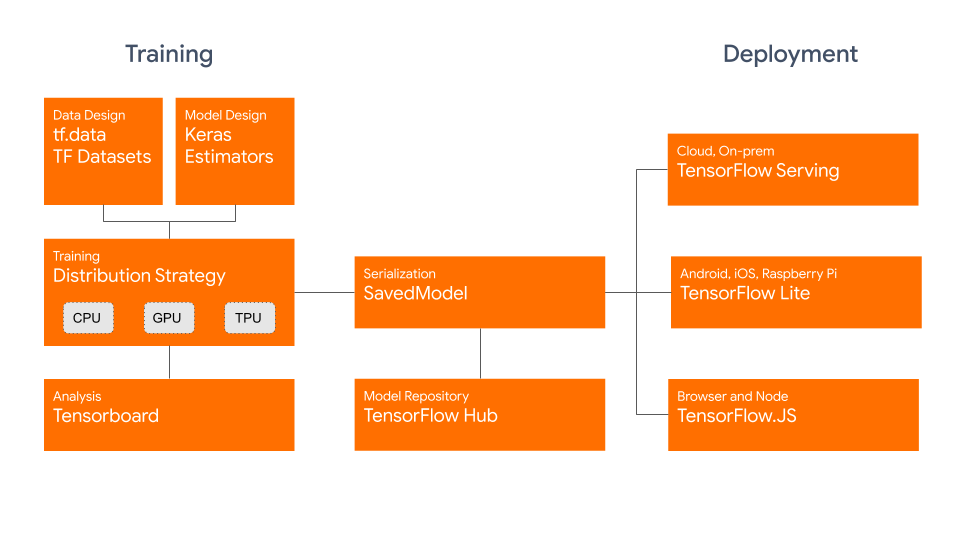
Yesterday, September 30, Google announced the release of the final release of TensorFlow 2.0.
“TensorFlow 2.0 is open source and supported by a community that says they need an easy-to-use platform, flexible and powerful, that supports deployment on any platform. TensorFlow 2.0 provides an extensive ecosystem of tools for developers, enterprises and researchers who want to use the latest machine learning technologies and create scalable ML-based applications. ”Says the Tensorflow blog on the Medium platform.

TensorFlow 2.0 has made a number of changes that make TensorFlow users more productive. TensorFlow 2.0 removed redundant APIs, after which the APIs became more consistent (Unified RNNs, Unified Optimizers), and integrated better with Python runtime, with Eager execution.
In TensorFlow 1.X, users were required to manually assemble an abstract syntax tree (graph) by executing tf. * API requests. Then, users must manually compile the abstract syntax tree by passing the set of output and input tensors to the session.run () call. TensorFlow 2.0 runs immediately (as Python usually does) and in 2.0, graphs and sessions should be considered implementation details.
TensorFlow 1.X was heavily dependent on implicit global namespaces. When you called tf.Variable (), it was placed in the graph by default, and it remained there even if you lost track of the Python variable pointing to it. You can then restore that tf.Variable, but only if you knew the name with which it was created. It was difficult to do if you did not control the creation of variables.
Calling session.run () is almost like calling a function: you define the input, the function is called, and you get a result set. In TensorFlow 2.0, you can decorate a Python function using tf.function () to mark it for JIT compilation so that TensorFlow executes it as a single graph (Functions 2.0 RFC).
Based on:
-
The Wait is Over - TensorFlow 2.0 Released!-
Effective TensorFlow 2.0